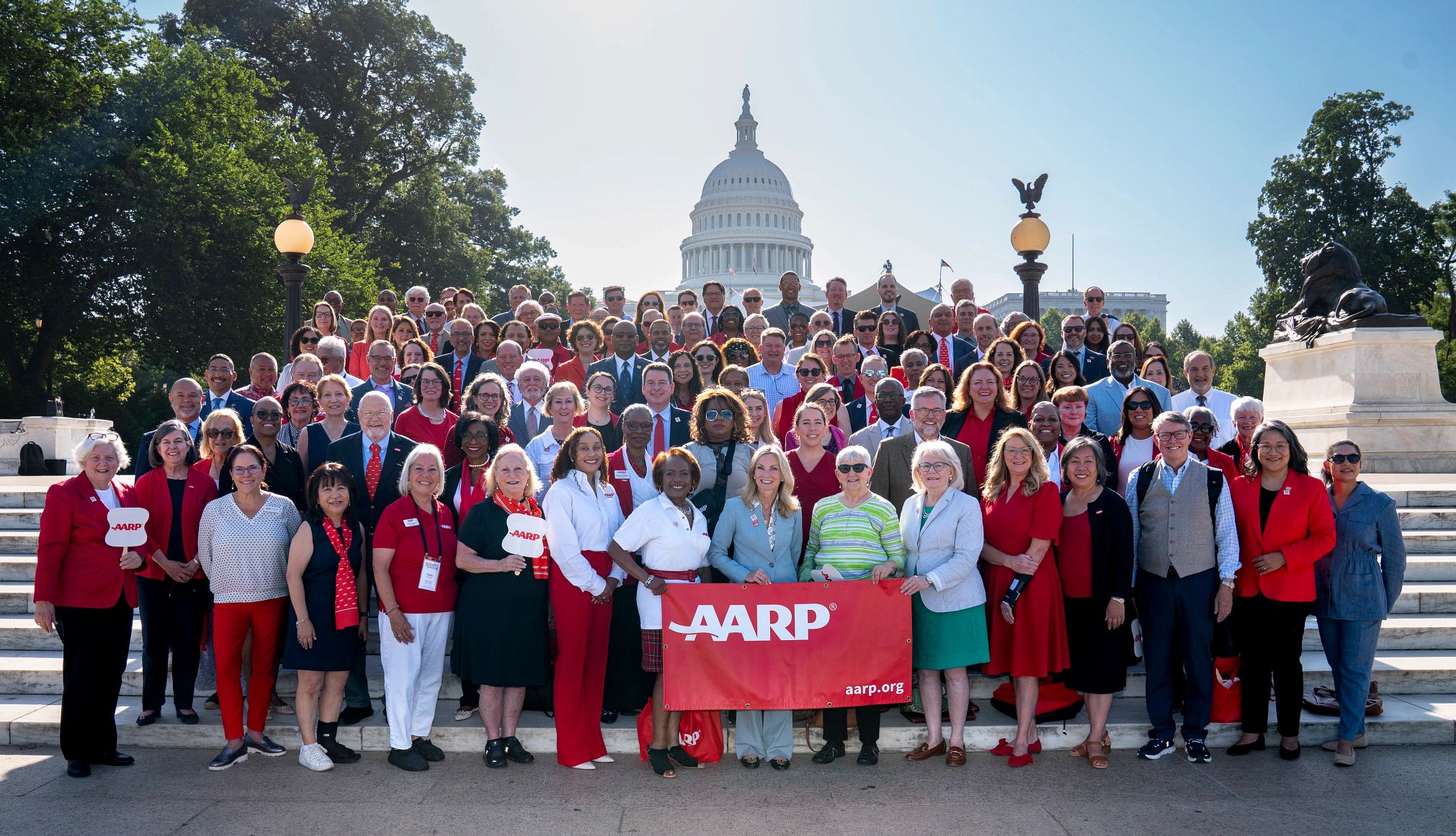AARP Hearing Center


In the sweltering D.C. summer heat, a sea of red-shirted AARP volunteers and staff from all 53 states and territories gathered Wednesday on the steps of the U.S. Capitol, ready to stand up for Americans age 50 and older.
On the agenda for AARP’s Lobby Day were roughly 400 meetings with Senate and House lawmakers. Topping the discussion list were issues like protecting Social Security, defending against cuts to Medicaid and the Supplemental Nutrition Assistance Program (SNAP) and strengthening support for the nation’s 48 million family caregivers.
The annual Lobby Day is an opportunity for AARP’s advocacy team to flood the Hill and demonstrate the power of our organization’s nationwide reach. But it’s just the tip of the iceberg when it comes to AARP’s lobbying work.
“We’re doing this work all year round, not just in Congress but in states and communities all over the country,” says Bill Sweeney, AARP’s senior vice president of government affairs. “Our members don’t often see that ongoing work, but that’s what they’re getting as part of their membership: this incredible team of staff and volunteers who fight for them at all levels of government every single day.”


Since AARP’s inception in 1958, our organization has lobbied for legislation and policies to improve the lives of Americans as they age. Over the years, AARP’s efforts have contributed to the creation of Medicare and Medicaid, the passage of the Older Americans Act, the protection of Social Security from privatization and more.
So how exactly does AARP work on behalf of the 100 million Americans age 50 and older? Let’s take a look.
We amplify your voice
AARP’s lobbying efforts “really all begin and end with our members,” says Philippe Largent, state director of AARP Illinois, whose team had 16 Lobby Day meetings on the schedule Wednesday. While legislative agendas, the sitting administration’s priorities, or new research and trends all influence what AARP chooses to tackle, our core metric is “what our members are telling us,” Largent says. “What issues are top of mind for them.”
In Illinois, AARP regularly surveys its 1.7 million members, consults with its volunteers and is out in the community to determine what issues are affecting older people in the state. Unaffordable and inaccessible housing and the rising cost of utilities are a constant concern, Largent says, as are nationwide issues such as rising cases of fraud, expensive prescription drugs and ensuring older people can receive their hard-earned Social Security benefits.
Members also play a key role in making sure federal and state lawmakers understand the issues, Sweeney notes. “We bring them into the fight,” he says, “because there are a million tactics you can use to influence lawmakers, but we have a unique ability to influence through our grass roots, and it’s incredibly powerful.”
Join Our Fight to Protect Social Security
You’ve worked hard and paid into Social Security with every paycheck. Here’s what you can do to help keep Social Security strong:
- Add your name and pledge to protect Social Security.
- Find out how AARP is fighting to keep Social Security strong.
- Get expert advice on Social Security benefits and answers to common questions.
- AARP is your fierce defender on the issues that matter to people 50-plus. Become a member or renew your membership today.
That power was on full display in March after the Social Security Administration (SSA) announced it was cutting certain over-the-phone services. This would have forced thousands of older Americans into already overburdened Social Security field offices to prove their identity. AARP quickly launched a campaign urging the SSA to reverse course, calling on AARP’s 38 million members to tell lawmakers how those cuts could affect them.
Within two weeks, more than 2 million emails had been sent to Congress. Facing new pressure from federal lawmakers, the SSA delayed its plan before abandoning it entirely in early April.






































































More From AARP